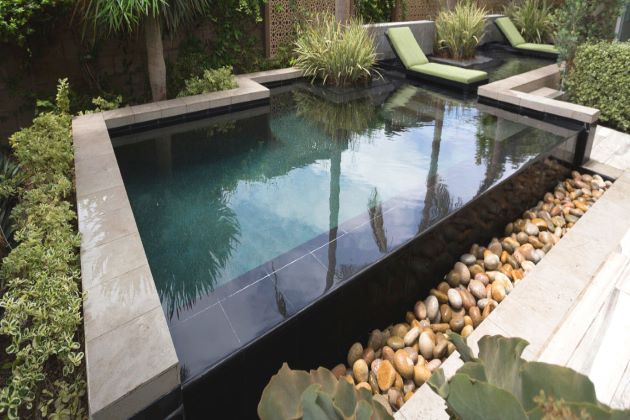By Bob G. Vincent, MPA
January 24, 2020
In a nutshell…
This article looks “up the pipe” at the water used to fill spas and pools, known as “source water.” Source water may be previously treated municipal water or private well water. Five categories of chemical constituents that may be present in source water are described along with associated issues they may present in the spa or pool, and corrective options for the pool manager.
How’s the quality of your spa or pool water? Beyond considering how it is filtered and chemically treated once under your control, it is essential to look “up the pipe” to the water’s origins and prior treatment. A recent article in Aqua magazine by the Pool & Hot Tub Alliance’s Recreational Water Quality1 Committee explores five categories of chemical constituents in source water that may impact the quality of your spa or pool water.
Where Does Your Spa or Pool Water Come From?
Spas and swimming pools are filled (and periodically “topped off”) with water from either a municipal source or a private well. Municipal water is the water most of us drink, cook with, and bathe in on a daily basis. U.S. municipal drinking water, sourced from both surface and ground waters, is regulated by the U.S. Environmental Protection Agency (EPA) to control contaminants to levels deemed safe for consumers. In rural areas, spas and pools are often filled with private well water, which may or may not be treated by the well owner. EPA does not regulate private well water; so it is up to well owners to monitor and manage the quality of their water.
The chemical constituents of natural waters reflect the makeup of the rocks and minerals of their source region. Water treatment alters that chemistry, and water delivery through pipelines may further modify it. The table below summarizes common chemical constituents of “up the pipe” water, their potential sources, associated issues, and corrective options.
| Constituent | Potential Sources | Associated Issues | Corrective Options |
| Metals; e.g., iron, copper, manganese, calcium, lead, and zinc | Natural watersWater treatmentPipe corrosion | High sanitizer consumption, staining, and scalingIron may interfere with UV performance, impacting disinfection | Sequestering agents or metal-removing productsIon exchange treatment |
| Monochloramine | Municipal water treatment | High levels of combined chlorine | Superchlorination UV treatmentOzone treatment |
| High levels of total dissolved solids | Natural watersBathers | Scale formation on pool surfaces | Anti-scaling productsChange water source |
| Phosphates | Corrosion inhibitor for municipal waterSome cleanersBathers | Algae and bacterial growth if sanitizer levels are inadequateHigh chlorine demand | Phosphate-removing products |
| Nitrates | Groundwater contaminant from fertilizer or sewage | Algae growth if sanitizer levels are inadequate | Anion exchange treatment or draining and replacement with low-nitrate water is recommended |
Know Your Source Water
Monitoring and managing water quality are critical tasks for maintaining healthy pools and spas. Many people know that an adequate chlorine residual and an appropriate pH are needed to control waterborne pathogens, but there is more to spa and pool water chemistry. Get a “head-start” on managing your spa or pool water quality by learning about your source water. Annual municipal water quality reports are available through your public water provider, and private well water can be analyzed by pool chemical supply stores, water treatment equipment installers, and independent laboratories.
When it comes to maintaining spa and pool water quality at a high level, it’s worth knowing what you’re starting with!
Bob G. Vincent, MPA, is an Environmental Administrator in the Florida Department of Health. He manages Department of Health programs for Healthy Marine Beaches, Safe Drinking Water, Water Well Surveillance, and Public Pools and Bathing Places.




